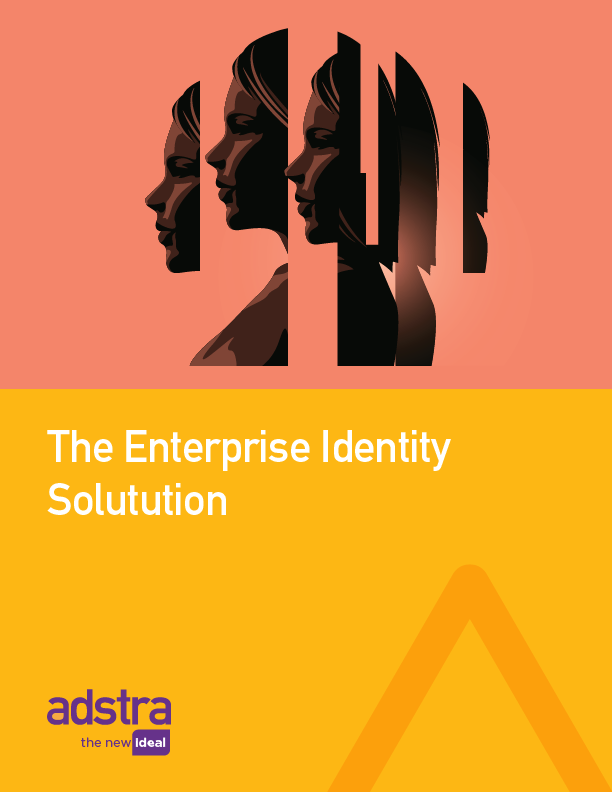By Chandos Quill, Chief Strategy & Development Officer, Adstra
As the world of marketing continues to evolve, it’s time to consider real changes—like moving entirely to using people-based data through the entire marketing value chain.
For over 20 years, marketers have used the same data, systems, and processes to reach consumers. These measured media solutions don’t work in today’s people-based marketing world.
Media fragmentation has made it nearly impossible for marketers to effectively and efficiently identify, reach and follow their target markets through paid media. As a result, marketers are universally suffering from a lack of true insight into their customers and the target markets with the most upside.
Parts of the value chain have not evolved in decades
While AdTech and MarTech have brought innovation to much of the value chain such as audience targeting, media buying and activation by leveraging people-based data, there are still parts of the value chain such as planning, audience creation and measurement that have not evolved in decades.
Marketers set campaign objectives, identify who they’re targeting and develop creative and media plans based on ‘measured media’ and panel-based data. The dominant providers don’t deal with individual level data; they deal with broad segment level data, and they estimate what people are doing. For example, Nielsen TV ratings has been the measurement standard for TV and the only way you could buy media. Yet, those ratings that represented the entire 300M US consumers is based on only a survey of 17,000 households.
All of these companies (Nielsen, Comscore, IRI) conduct small surveys and project the results to the entire population. This approach can lead to misleading information, decisions, and results. And as new technology and channels evolve (such as CTV), it becomes even more critical to use a people-based approach.
People-based is data different
What is people-based and why is it different? Most data in today’s marketplace is tied to a single identifier such as a hashed email, cookie, or mobile device. Some are more stable than others and can be used for longer periods of time like mobile devices. Some are less stable and last for short periods like cookies. People-based refers to connecting the data and identifiers back to a real, valid individual. A mobile device might belong to a Camila Lopez or Yong Park, and if they get a new phone, a person-based identity key would persist, not having to be replaced and rebuilt. A person-based system would also be able to connect a home address to an email, and an email to mobile devices, enabling marketers to bridge media channels with a persistent and connected identity key over time.
We know change is already under way with first party data focus, in-housing marketing operations and media planning trends, and recent questions about the validity of the data sources used traditionally (Nielsen) to name a few. The challenge of what should be done to address the gaps in a fully effective marketing value chain however still exists.
The solution is to integrate people-based data into all parts of the marketing value chain.
Gap: Target audiences rarely developed or sized from people data
Solution: Use people-based data (brand’s data plus third-party data) for ranking and scoring the entire US marketable universe based. Enables more accurate segmentation and market sizing, more effective audience insights and improved test plans and campaigns.
Gap: Upstream research data is usually disconnected to operational people data
Solution: Creative can be tested and refined based on feedback from a verified sample that is an actual representation of the target audience. Creative elements can be isolated and optimized using designed experiments at the individual consumer level.
Gap: Real customer and 3PD cannot be matched to media research tools
Solution: Data can be matched and calibrated against programmatic, addressable and platform ecosystems. More granular segments mean less wasteful media plans.
Gap: Omnichannel activation of panel data yields poor results when measured
Solution: Media planning panels matched to people-based data for improved media planning and not disconnected media planning based on proxy data.
Use people-based IDs loaded into walled gardens, publishers, and platforms directly. Provides the ability to orchestrate and optimize CRM and paid media campaigns against verifiable audiences across all touchpoints including walled gardens. Same exact audience can be reached in any addressable medium.
Gap: Limited exposure data and ability to conduct match-backs for measurement and limits marketers view on ROI
Solution: Using privacy compliant people-based data and identity for match back of addressable ad exposure with marketers first party data.
Improved MTA and MMM. More comprehensive match-back analytics between all partners in the ecosystem.
Filling the gaps and disconnects
Using people-based data as the foundation all the way through insights, targeting and measurement fills many of the gaps and disconnects that exist today. People-based data as the foundation can then be aggregated as needed for as the connective tissue for layering in other types of data sets such as panels or market research data needed to refine and give depth and insights on target segments. And it eliminates the need for so many middlemen that add complexity and cost in the process.
If we look at the forces of change that exist today, it is easy to see that people-based data is a solution that offers the best outcome.
Control and ownership of 1st Party Data; the shift to a more DTC oriented marketing process; the need to reduce data handoffs and complexity; the need to eliminate low value add, volume driven vendor expenses; and the freedom from having to rely on any single 3rd Party to execute: these are all priorities driving change at successful marketing companies today that people-based data addresses.
To learn more, visit adstradata.com.




